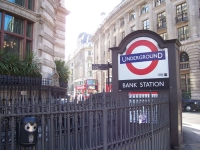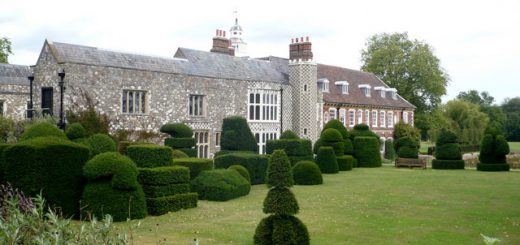Souther Fell, Mungrisdale
A phantom army was witnessed on Souther Fell by a farm hand on Mid-Summers-Eve in the year 1735. The army took the form of mounted troops with infantry marching in a column. One year later on the same date the army was seen again by William Lancaster who was a local farmer.
 In 1745, the year of the Jacobite uprising the army was witnessed again by over 26 people on the 23rd June. This time the army was sighted with carriages, and covered an area of about half a mile. It would not have been possible to bring carriages on Souther Fell and the story is a complete mystery.
In 1745, the year of the Jacobite uprising the army was witnessed again by over 26 people on the 23rd June. This time the army was sighted with carriages, and covered an area of about half a mile. It would not have been possible to bring carriages on Souther Fell and the story is a complete mystery.
An account of the haunting appeared in The Gentlemans’ Magazine in 1747.
Directions: A footpath leads round the mountain from Mungrisdale.




Re: Souther Fell, Mungrisdale
There were 26 witnesses to the later event, who all swore their account to the local magistrate because of the concerns about Jacobites. As you say though, it’s just not possible to take carriages over Souther Fell and people who went up to look the following day saw no sign of tracks or hoofprints.
It’s so well-attested, and completely inexplicable.
Of course, mysterious processions in mountains always makes you think of faery procession stories. This is a very late one, though.
http://esmeraldamac.wordpress.com
Re: Souther Fell, Mungrisdale
The Haunted Homes and Family Traditions of Great Britain by John Ingram (1897)
SOUTER FELL.
Harriet Martineau, in her description of The English Lakes, writes: "The ascent of Saddleback may beenn behind Threlkeld, up a path which the villagers will point out; but an easier way is to diverge from the main road some way farther on, by the road to Hesket, near the village of Scales. The hill-side path is to be taken which leads along Souter Fell, by the side of the stream which descends from Scales Tarn.
"This part is the very home of superstition and romance. This Souter or Soutra Fell is the mountain on which ghosts appeared in myriads, at intervals during ten years of the last century; presenting the same appearances to twenty-six chosen witnesses, and to all the inhabitants of all the cottages within view of the mountain, and for a space of two hours and a half at one time the spectral show being closed by darkness ! The mountain, be it remembered, is full of precipices, which defy all marching of bodies of men; and the north and west sides present a sheer perpendicular of 900 feet.
"On Midsummer-eve, 1735, a farm servant of Mr. Lancaster, half a mile from the mountain, saw the eastern side of its summit covered with troops, which pursued their onward march for an hour. They came, in distinct bodies, from an eminence on the north end, and disappeared in a niche in the summit. When the poor fellow told his tale, he was insulted on all hands; as original observers usually are when they see anything wonderful. Two years after, also on a Midsummer-eve, Mr. Lancaster saw some men there, apparently following their horses, as if they had returned from hunting. He thought nothing of this; but he happened to look up again ten minutes after, and taw the figures, now mounted, and followed by an interminable array of troops, five abreast, marching from the eminence and over the cleft as before. All the family saw this, and the manoeuvres of the force, as each company was kept in order by a mounted officer, who galloped this way and that. As the shades of twilight came on, the discipline appeared to relax, and the troops intermingled, and rode at unequal paces, till all was lost in darkness. Now, of course all the Lancasters were insulted, as their servant had been; but their justification was not long delayed.
"On the Midsummer-eve of the fearful 1745, twenty-six persons, expressly summoned by the family, saw all that had been seen before, and more. Carriages were now interspersed with the troops; and everybody knew that no carriages had been, or could be, on the summit of Souter Fell. The multitude was beyond imagination; for the troops filled a space of half a mile, and marched quickly till night hid them still marching. There was nothing vaporous or indistinct about the appearance of these spectres. So real did they seem, that some of the people went up, the next morning, to look for the hoof-marks of the horses; and awful it was to them to find not one foot-print on heather or grass. The witnesses attested the whole story on oath before a magistrate; and fearful were the expectations held by the whole country-side about the coming events of the Scotch rebellion.
"It now came out that two other persons had seen something of the sort in the interval viz. in 1743 but had concealed it, to escape the insults to which their neighbours were subjected. Mr. Wren, of Wilton Hall, and his farm-servant, saw, one summer evening, a man and a dog on the mountain, pursuing some horses along a place so steep that a horse could hardly by any possibility keep a footing on it. Their speed was prodigious, and their disappearance at the south end of the fell so rapid, that Mr. Wren and the servant went up, the next morning, to find the body of the man who must have been killed. Of man, horse, or dog, they found not a trace ; and they came down and held their tongues. When they did speak, they fared not much the better for having twenty-six sworn comrades in their disgrace.
"As for the explanation, the editor of the Lonsdale Magazine declared (vol. ii., p. 313) that it was discovered that on the Midsummer-eve of 1745 the rebels were ‘exercising on the western coast of Scotland, whose movements had been reflected by some transparent vapour, similar to the Fata Morgana.’ This is not much in the "way of explanation ; but it is, as far as we know, all that can be had at present. These facts, however, brought out a good many more; as the spectral march of the same kind seen in Leicestershire in 1707; and the tradition of the tramp of armies over Helvellyn, on the eve of the battle of Marston Moor."
We have allowed Harriet Martineau to tell her tale in her own words, without comment.